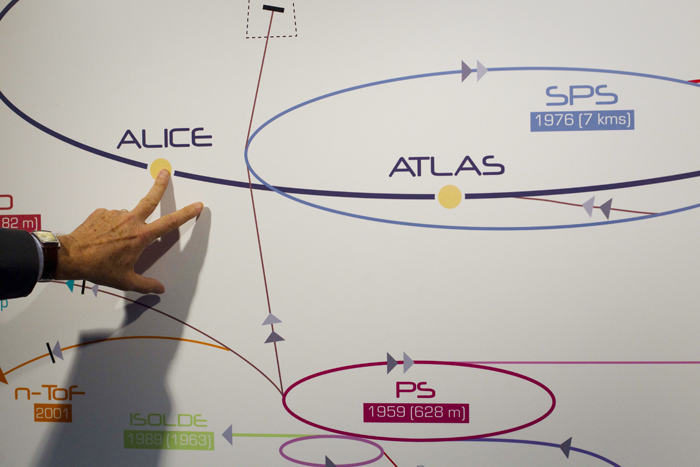GENEVA — Scientists hunting for an elusive subatomic particle say they’ve found “intriguing hints” that it exists, narrowing down the search for what is believed to be a basic building block of the universe.
The Higgs boson — popularly referred to as the “God particle” — is more likely to be found in the lower mass or energy ranges of the massive atom smasher being used to track it down, physicists from two independent research teams said today.
The researchers were careful to note they do not have enough data yet to definitively say the particle exists, but also said the latest data is strong enough that the question could be answered one way or another by next year.
Researchers hope that the particle, if it exists, can help explain many mysteries of the universe. British physicist Peter Higgs and others theorized the particle’s existence more than 40 years ago to explain why atoms, and everything else in the universe, have weight.
Both of the research teams are involved with CERN, the European Organization for Nuclear Research near Geneva. CERN oversees the $10-billion Large Hadron Collider under the Swiss-French border, a 17-mile (27-kilometer) tunnel where high energy beams of protons are sent crashing into each other at incredible speeds.
Fabiola Gianotti, an Italian physicist who heads the team running the so-called ATLAS experiment, said “the hottest region” is in lower energy ranges of the collider. She said there are indications of the Higgs’ existence and that with enough data it could be unambiguously discovered or ruled out next year.
Several mass or energy ranges within the atom smasher are now excluded to a “95 percent confidence level,” Gianotti told other physicists at CERN.
Afterward, Guido Tonelli, lead physicist for the team running what’s called the CMS experiment, outlined findings similar to those of the ATLAS team, saying the particle is most likely found “in the low mass region” of the collider.
Rolf Heuer, director of the European particle physics laboratory near Geneva, said in conclusion that “the window for the Higgs mass gets smaller and smaller.”
“But be careful — it’s intriguing hints,” he said. “We have not found it yet, we have not excluded it yet.”
Send questions/comments to the editors.



Success. Please wait for the page to reload. If the page does not reload within 5 seconds, please refresh the page.
Enter your email and password to access comments.
Hi, to comment on stories you must . This profile is in addition to your subscription and website login.
Already have a commenting profile? .
Invalid username/password.
Please check your email to confirm and complete your registration.
Only subscribers are eligible to post comments. Please subscribe or login first for digital access. Here’s why.
Use the form below to reset your password. When you've submitted your account email, we will send an email with a reset code.